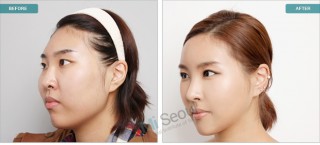A Plastic Surgeon’s Help
Open rhinoplasty in Korea is a common procedure among plastic surgeons. However common, it is also a difficult procedure that needs the attention of a trained and experienced surgeon. If you are interested in open rhinoplasty in Korea, the first step is a consultation.
Rhinoplasty is a surgical procedure that changes the structure of the nose. It could be that the patient is having a broken nose repaired or the patient is looking for a more aesthetically appealing nose. Either way, the surgeon will discuss the patient’s options. During the first consultation, a plastic surgeon will do a thorough exam and may even take x-rays of the patient’s nose. Additionally, the surgeon will discuss the patient’s desire and hopes for the surgery. The patient should ask questions, voice concerns, and make clearly stated goals for the surgery. If the surgeon determines that the patient is a good candidate for open rhinoplasty, then an appointment can be set for the surgery.
Before and after the surgery, the patient will be expected to do a few things. The surgeon will discuss this and also talk about recovery time. Open rhinoplasty is a major surgery and the patient will need plenty of time to rest and recover. Following the surgery, there will be additional appointments with the surgeon to ensure that the open rhinoplasty is healed correctly. The results may not be visible right away. Time will need to pass for healing to take place and swelling to go down. The bruising will also take time to go away. With time, the patient will begin to see the changes he had hoped for.
Open rhinoplasty in Korea may be a common procedure but it is still a major surgery that should be taken seriously. This procedure requires the help of a skilled plastic surgeon who has performed open rhinoplasty numerous times in the past. In addition, the surgeon and the patient must work together regarding the patient’s health. The patient should ask questions and be open and honest with the surgeon. In return, the surgeon should notify the patient if they are not right for the surgery. In the end, when surgeon and patient work cooperatively, the patient can expect to have a full recovery with positive results.

; ?/>/images/facebook.png)







